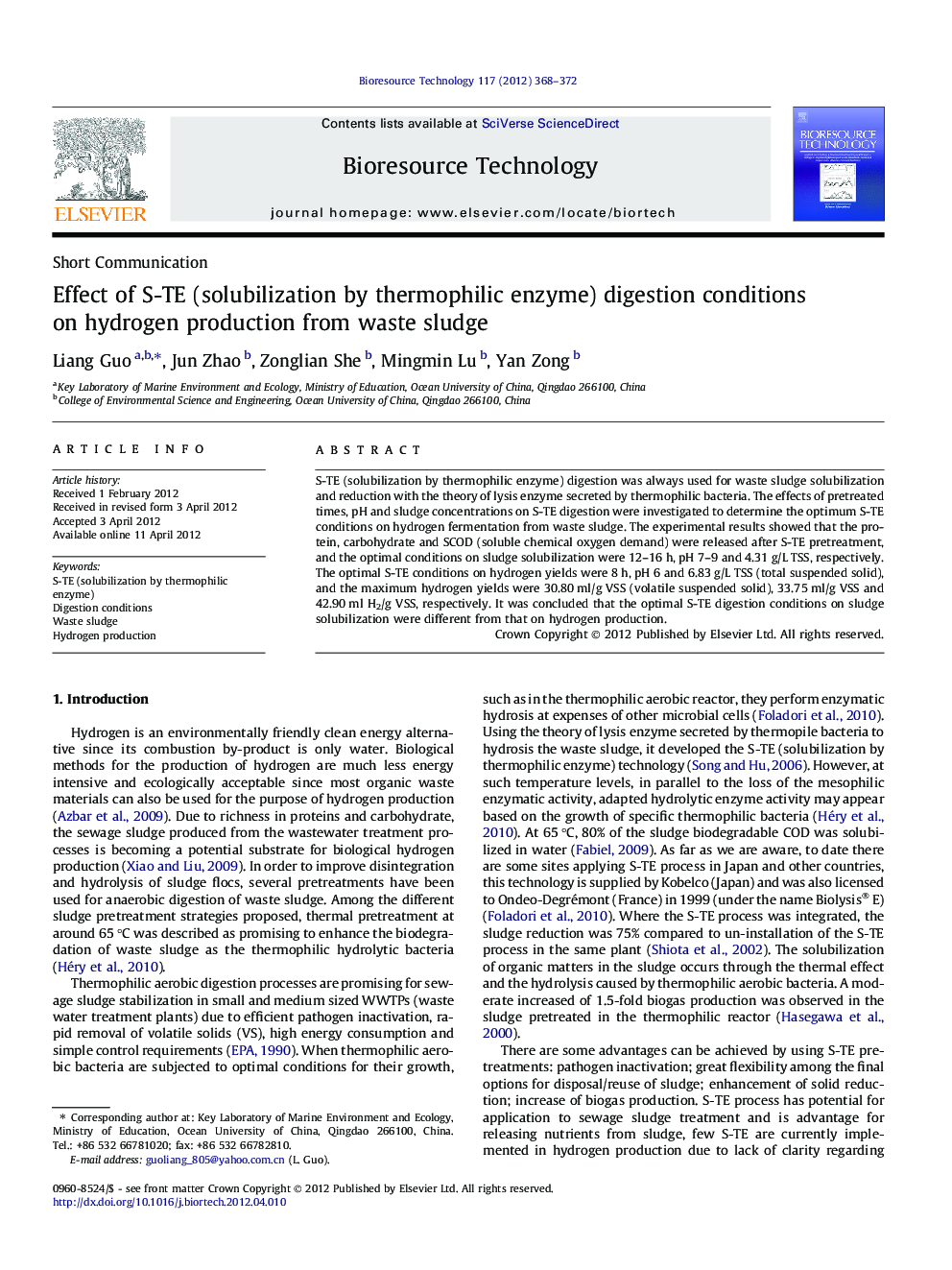| Article ID | Journal | Published Year | Pages | File Type |
|---|---|---|---|---|
| 681539 | Bioresource Technology | 2012 | 5 Pages |
S-TE (solubilization by thermophilic enzyme) digestion was always used for waste sludge solubilization and reduction with the theory of lysis enzyme secreted by thermophilic bacteria. The effects of pretreated times, pH and sludge concentrations on S-TE digestion were investigated to determine the optimum S-TE conditions on hydrogen fermentation from waste sludge. The experimental results showed that the protein, carbohydrate and SCOD (soluble chemical oxygen demand) were released after S-TE pretreatment, and the optimal conditions on sludge solubilization were 12–16 h, pH 7–9 and 4.31 g/L TSS, respectively. The optimal S-TE conditions on hydrogen yields were 8 h, pH 6 and 6.83 g/L TSS (total suspended solid), and the maximum hydrogen yields were 30.80 ml/g VSS (volatile suspended solid), 33.75 ml/g VSS and 42.90 ml H2/g VSS, respectively. It was concluded that the optimal S-TE digestion conditions on sludge solubilization were different from that on hydrogen production.
► Waste sludge is treated by S-TE digestion and then used for hydrogen production. ► The waste sludge solubilization is improved by different S-TE conditions. ► The hydrogen yield with sludge is affected by different S-TE conditions. ► Optimum S-TE conditions on digestion are different from that on hydrogen yield.
